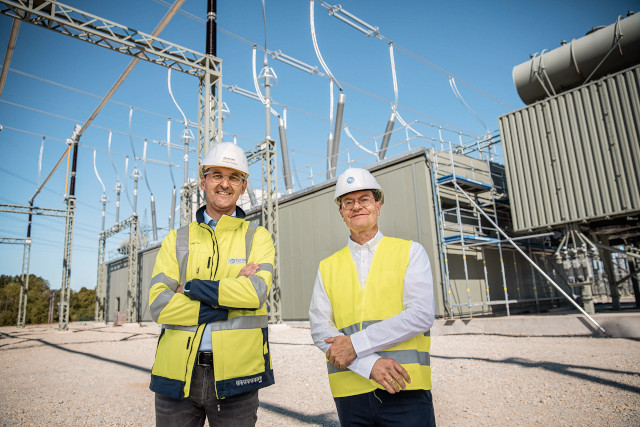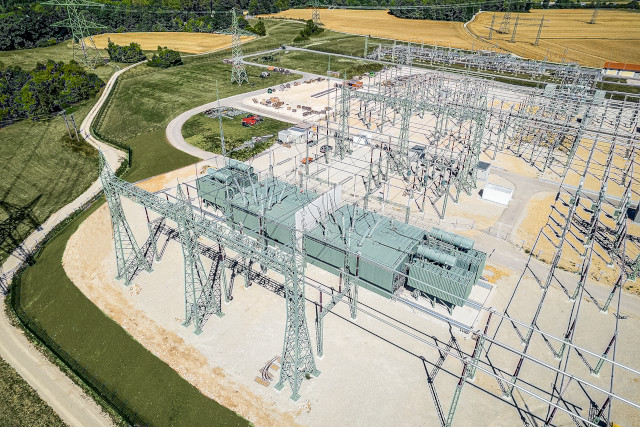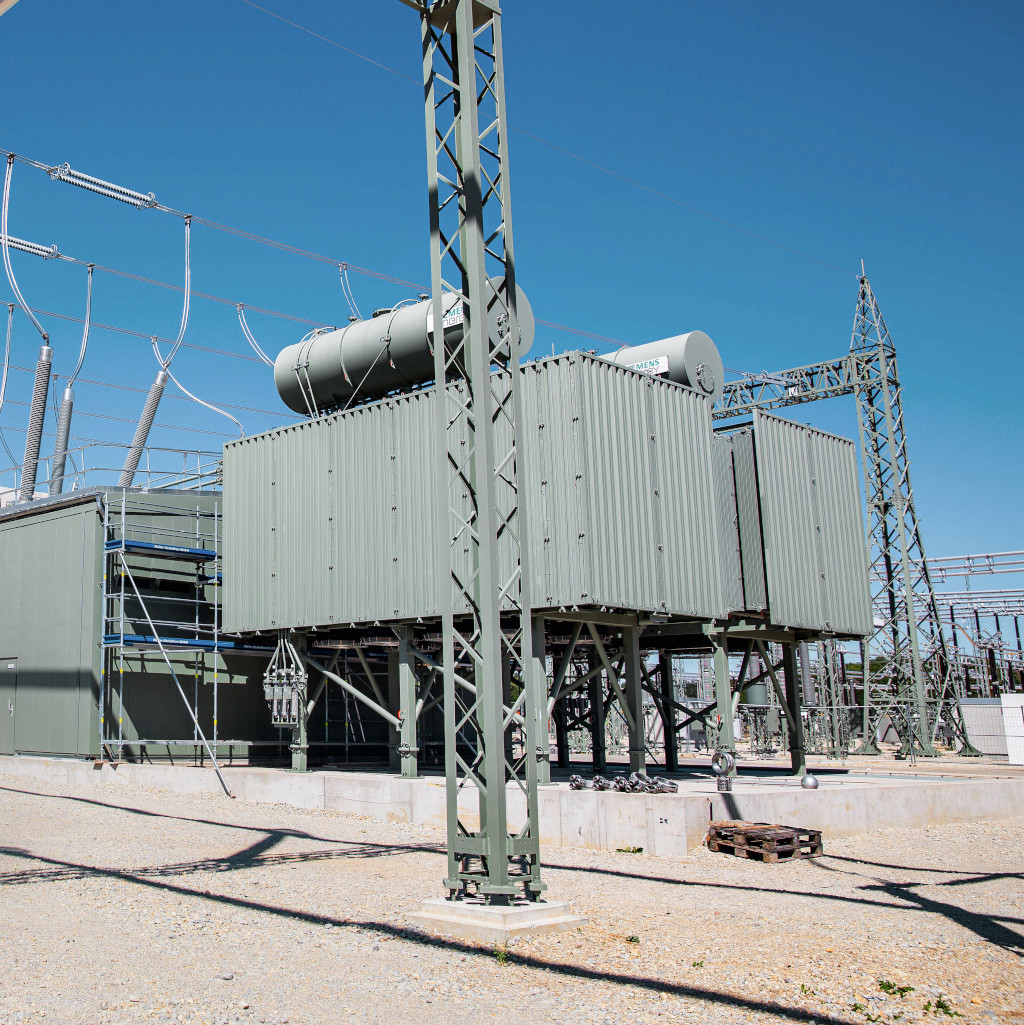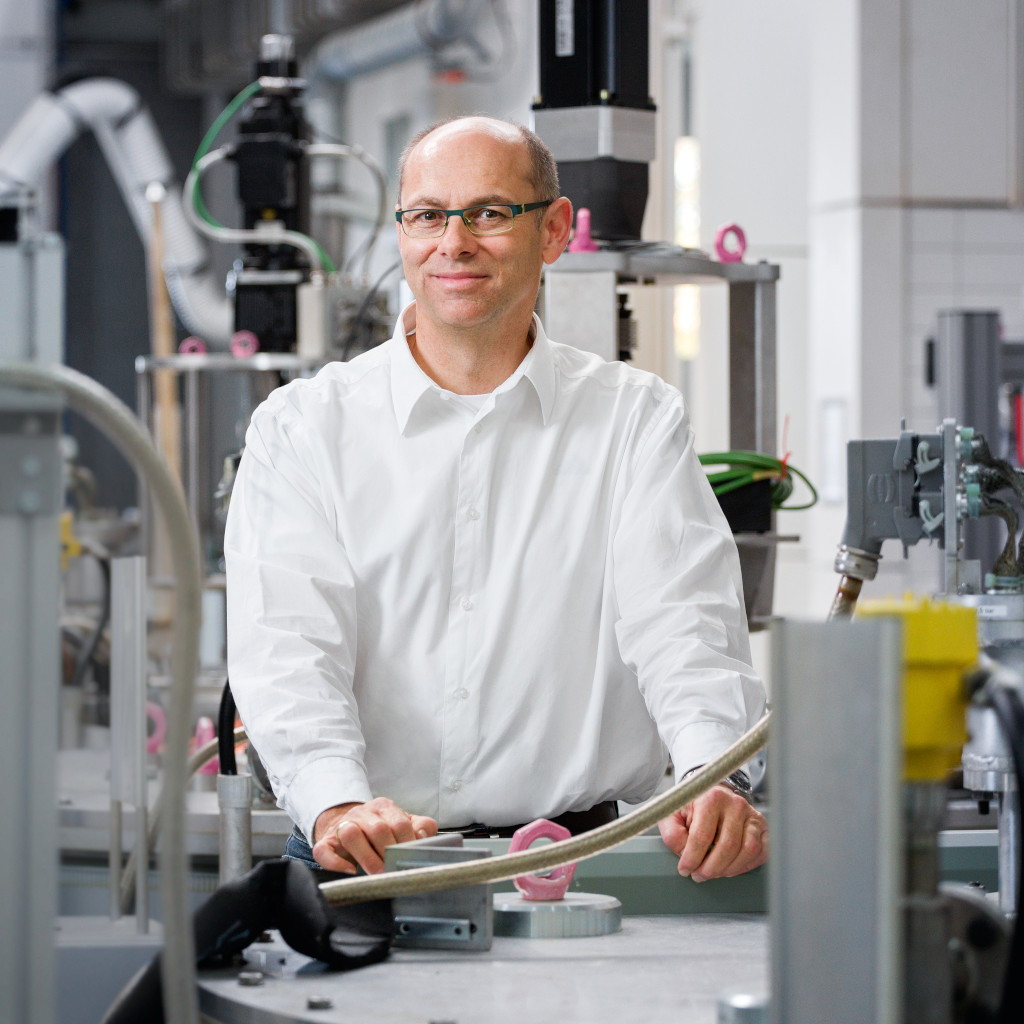Four new phase shifters at TenneT’s Würgau substation use powerful on-load tap-changers from MR to optimally distribute the volatile load flows of renewable energies in the power grid.
Sun and wind don’t send a bill? Sure they do: If more and more renewable energy flows into our power grids, there will also be more power fluctuations due to the weather. To protect line sections from overloads and bottlenecks, expensive redispatch measures — interventions in the pre-planned generation output of power plants — are then necessary. These have to be requested by the respective transmission system operator. According to the BDEW (German Association of Energy and Water Industries), this created costs of around 590 million euros in Germany in 2021. In 2020, the figure was 240 million euros — another example showing that the energy transition also means more expense for the conversion and expansion of the electricity networks.
TenneT TSO, one of the four largest transmission system operators in Germany, could certainly sing a song about this. That’s why the Bayreuth-based company is setting the course for the future and investing in all areas. Among other things, they are relying on powerful phase-shifting transformers (PSTs) to make particularly stressed lines fit for the increasing feed-in of green electricity. The four currently largest weigh 940 tons each, are each the size of a bungalow and are located at the Würgau substation in the Bamberg district. From the end of 2022, they will regulate two important north-south power circuits in the Bavarian regions of Upper and Middle Franconia and help to better distribute wind power from the German north to the south.

PSTs shift the overload from a power line in a way that makes better use of the overall grid. How is this done? If you think of the transmission grid as a network of water pipes with many inflows and outflows, electricity, like water, always seeks the path of least resistance. If energy fed into a circuit becomes congested or there is a bottleneck, phase shifters connected in parallel can open or regulate the corresponding inflows or outflows upstream and downstream like valves, so that the current takes the desired path.
HELPS THE ENERGY TRANSITION
In this way, load flows in the grid can be optimally controlled. This leads to an overall higher transmission capacity in the extra-high voltage grid, emphasizes Dr. Florian Martin, Head of Asset Technology at TenneT, and explains further: “Costly redispatch measures are no longer necessary. In view of the current energy crisis, this can even lead to the situation that the grid can continue to be operated in a stable manner, even if redispatch power plants required for this should no longer be available.” Therefore, in addition to other measures, more and larger phase-shifting transformers are needed to counter the more volatile feeders.

The Würgau phase shifters demonstrate the cutting-edge technical requirements involved. One of these colossi consists of two units, so-called series, and excitation transformers. Each double unit has a throughput of 1,420 megavolt amperes (MVA), making a total of 2,840 MVA.
Powerful bouncer
There are good reasons for this enormous power: While the entire load flow of a line passes through the transformer, it is the on-load tap-changer inside that allows the load flow to be braked and accelerated in the first place. As a key functional PST element, it controls the high powers. Four on-load tap-changers are installed in the Würgauer phase shifters for each transformer bank. The demands on performance and reliability are extreme here.
That´s why TenneT turned to the company that invented the on-load tap-changer and continues to optimize it: “Together with MR, we developed a customer-specific solution from their portfolio based on our technical specifications, tested it and put it into operation,” says Florian Martin. Completely planned and built, the transport of the PST colossi was the last major hurdle before their installation and commissioning. In the summer of 2021, eight heavy-duty transports brought the individual PST boilers, each weighing up to 326 tons, to the Würgauer Berg in two days via rail, ship and road (see info box).
FOR THE PHASE SHIFTERS OF TOMORROW
In the future, customers can also rely on MR’s latest development: The new VACUTAP® VRL® switches up to ten MVA and is virtually maintenance-free. It is also a world record holder: in order to save space, MR has designed the output to be an incredible 3,200 amps. That’s more than twice as much as the largest tap changer has ever had. MR Managing Director Wilfried Breuer:
“Its extraordinary switching capacities, even at very high phase currents, make it possible to dispense with symmetrical current sharing in the control winding. This reduces material usage, construction volume, weight and also the operating losses of the transformer.”
The VACUTAP® VRL® in figures:
- 3,200 A maximum rated current
- 6,000 V maximum step voltage
- 10,000 kVA maximum switching capacity
TenneT spent two years preparing the substation, which was modernized in 2015, and invested 70 million euros in the PST system alone. When the transformers go into operation, the project will have taken four years to set up. A huge effort, but well worth it, because phase shifters help to bring the energy transition into the grid in a future-proof way. “And by saving on redispatch costs, phase-shifting transformers pay for themselves in a short time, usually after just one year or less,” assures MR expert Jürgen Kollmannsberger (see interview in next article).
YOUR CONTACT
 Do you have any questions about the VACUTAP® VRL®?
Do you have any questions about the VACUTAP® VRL®?
Christian Hillinger is there for you:
C.Hillinger@reinhausen.com

